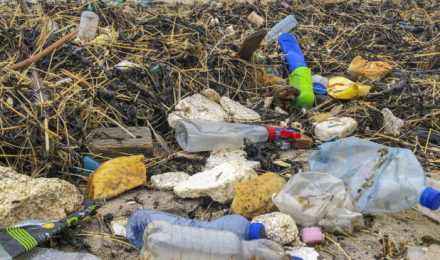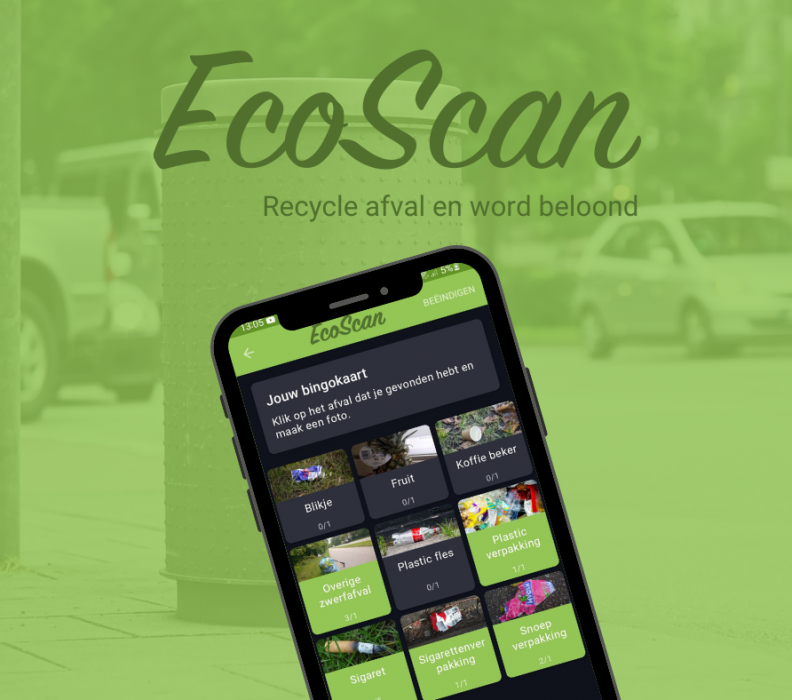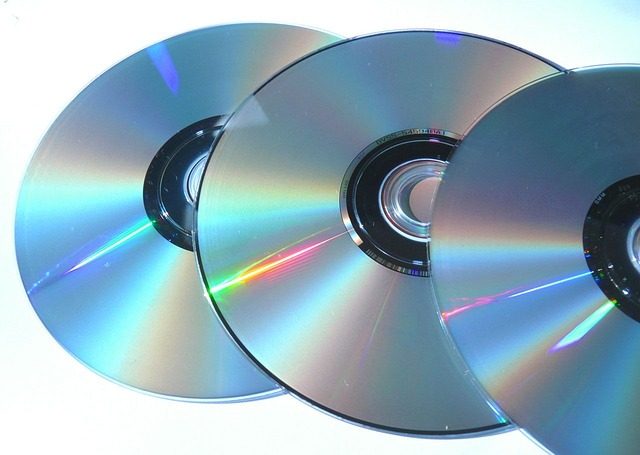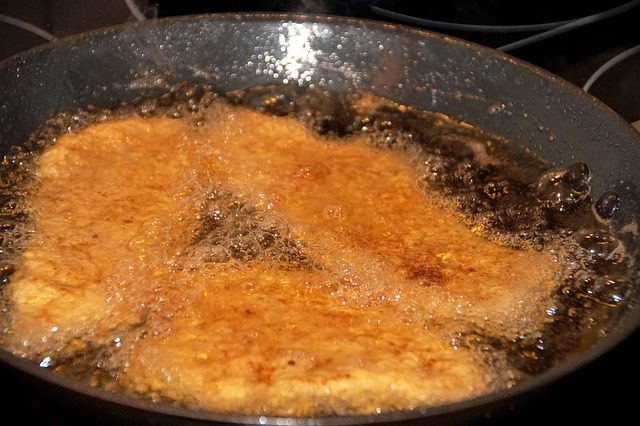
Recycle afval
Maak een foto of scan de barcode in de EcoScan app en wij vertellen je in welke afvalbak het afval kan.

Speel Zwerfafval Bingo
Doe mee aan een leuke en interactieve zwerfvuilopruimactie in jouw omgeving en maak een positieve impact op het milieu.

Korting in de EcoShop
Koop milieuvriendelijke producten in onze shop en ontvang korting op je bestelling door met EcoCoins te betalen.
Over ons
Recycling - op de EcoScan manier
EcoScan is een recycling-app die je helpt om afval goed te sorteren, zodat je makkelijker kunt bijdragen aan een schoner milieu. Met zijn geavanceerde scan technologie geeft EcoScan nauwkeurig en gepersonaliseerd recyclingadvies. Of je nu thuis, op kantoor of onderweg bent, EcoScan is jouw ultieme hulp bij het sorteren van afval!
De app geeft je helder en accuraat sorteeradvies, zodat je jouw bijdrage kan doen aan een schoner milieu.
De scan technologie van EcoScan biedt je persoonlijk sorteeradvies op basis van jouw locatie en sorteerregels.
Door de app te gebruiken, kun je EcoCoins verdienen. Deze kunnen worden ingewisseld voor kortingen en andere voordelen.
Wat doen we?
EcoScan helpt je eenvoudig met het recyclen van afval, waardoor het gemakkelijker wordt om je bijdrage te doen aan een schonere wereld.

Product herkenning
Barcode- en foto herkenning om het type afval te identificeren.

Analyses
Krijg meer inzicht in hoe je restafval voorkomt.

Lokaal sorteeradvies
Om je het beste sorteeradvies te geven, houden we rekening met de sorteerregels van jouw locatie.

Beloningen met EcoCoins
Recycle je afval en word beloond met EcoCoins.

Zwerfafval Bingo
Neem deel aan zwerfafval evenementen zoals de zwerfafval bingo.

EcoScan Shop
Koop milieuvriendelijke producten in onze shop met behulp van EcoCoins.
Aankomende evenementen
Reviews

As a business owner, I’m always looking for ways to reduce waste and be more environmentally friendly. EcoScan has been

EcoScan has been a game changer for my family. Before, we struggled to figure out how to properly dispose of

I’ve been using EcoScan for a few months now, and I’m really impressed with how accurate and personalized the recycling

I love how EcoScan not only helps me recycle properly, but also rewards me for doing so. It’s a win-win!













